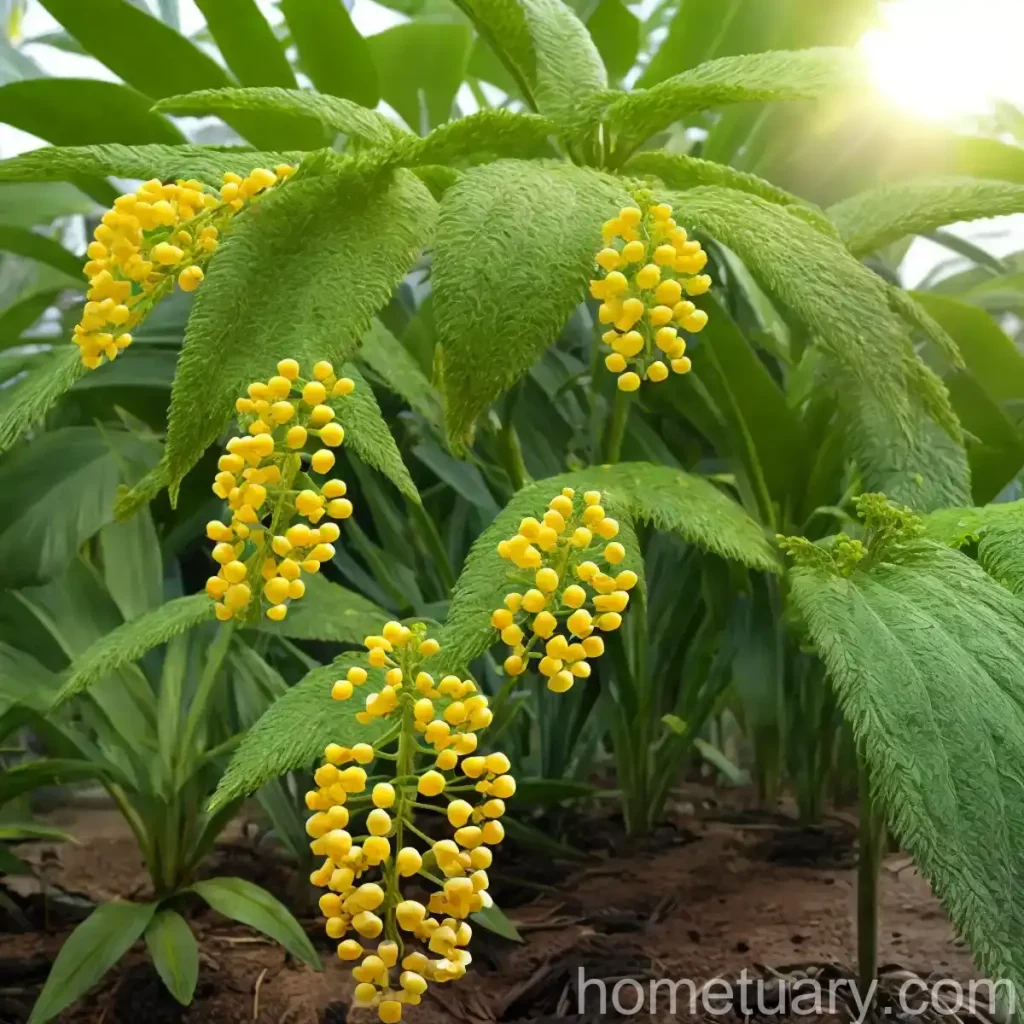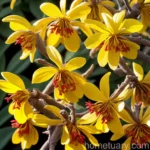Plant Spotlight: Hydnocarpus (Hydnocarpus anthelminthicus)
Hydnocarpus (Hydnocarpus anthelminthicus) is an intriguing plant with a rich history and a wide array of traditional and modern uses. In this comprehensive guide, we will delve into the key characteristics, cultivation requirements, uses, potential benefits, and ecological aspects of Hydnocarpus. Whether you are a plant enthusiast, a botanist, or someone interested in traditional remedies and natural healing, this blog post will provide you with a deep understanding of Hydnocarpus.
So, let’s embark on a journey to uncover the fascinating world of Hydnocarpus!
What is Hydnocarpus (Hydnocarpus anthelminthicus)?
Hydnocarpus anthelminthicus is a species of tree belonging to the family Achariaceae. It is native to the Western Ghats in India and is known for its valuable seeds which are the source of Hydnocarpus oil. The oil extracted from these seeds has made Hydnocarpus anthelminthicus significant in various traditional and modern practices, ranging from medicinal applications to skincare and natural remedies.
Key Takeaways – Hydnocarpus (Hydnocarpus anthelminthicus)
Before we deep dive into the specific aspects of Hydnocarpus, let’s take a quick look at the key takeaways:
- Scientific Name: Hydnocarpus anthelminthicus
- Family: Achariaceae
- Native to: Western Ghats, India
- Primary Uses: Source of Hydnocarpus oil for medicinal and cosmetic purposes
- Cultural Significance: Traditional uses in Ayurveda and other indigenous medicinal practices
- Conservation Status: Evaluated as nearly threatened and importance for conservation (source)
Now, let’s explore the various aspects of growing and caring for Hydnocarpus.
Culture
Water
Hydnocarpus trees require moderate watering, especially during the warmer months and dry periods. However, it’s essential to ensure that the soil is well-drained to prevent waterlogging, which can be detrimental to the plant’s health.
Sunlight
Hydnocarpus thrives in partial to full sunlight, and ensuring adequate exposure to sunlight is crucial for its growth and development. Placing the plant in a location with good access to natural light will support its overall vigor.
Fertilizer
Fertilizing Hydnocarpus trees can significantly contribute to their health and growth. A balanced fertilizer, rich in essential nutrients, can be applied during the growing season to support robust growth and the development of healthy foliage.
Soil
The ideal soil for Hydnocarpus trees is well-draining and fertile. A loamy soil type is considered beneficial for their growth, allowing for proper aeration and moisture retention.
Pruning
Pruning Hydnocarpus trees is essential to maintain their shape, remove damaged or diseased branches, and promote new growth. Regular pruning sessions can help in shaping the tree and ensuring its overall health and vitality.
Propagation
Hydnocarpus trees can be propagated from seeds or cuttings. Both methods can be effective, and it’s important to ensure a suitable environment with adequate moisture and warmth for successful propagation.
Container Popularity
While Hydnocarpus trees are primarily grown in outdoor settings, they can also thrive in large containers. This can be a great option for individuals with limited outdoor space who still desire to cultivate this remarkable plant.
Common Diseases
Hydnocarpus trees may be susceptible to certain diseases, with fungal infections and root rot being among the potential issues. Regular monitoring, appropriate watering, and maintenance practices can help in preventing these diseases.
Disease Diagnosis
Diagnosing diseases in Hydnocarpus trees involves carefully observing the plant for any signs of discoloration, wilting, or unusual growth patterns. If any abnormalities are noticed, prompt action should be taken to identify and address the underlying cause.
Common Pests
Pests such as aphids, scales, and mites can pose a threat to Hydnocarpus trees. Regular inspection and the application of suitable pest control measures can help in managing these potential infestations.
Botanist’s Tips
For botanists and plant enthusiasts, here are some tips to consider when cultivating Hydnocarpus trees:
- Soil Testing: Periodic soil testing can provide valuable insights into the nutrient levels and pH balance, allowing for precise adjustments to support the plant’s health.
- Observation: Regular observation of the tree’s foliage, branches, and overall appearance can help in identifying any issues or potential areas for improvement.
- Pruning Techniques: Employing proper pruning techniques, including sterilizing tools and making clean cuts, can contribute to the plant’s long-term health.
Fun Facts
- The seeds of Hydnocarpus anthelminthicus have been used traditionally for their anthelmintic properties, aiding in the expulsion of intestinal parasites.
- Hydnocarpus oil, derived from the seeds, has been utilized in various skincare and haircare formulations for its moisturizing and nourishing effects.
- The botanical classification of Hydnocarpus places it within the diverse and ecologically significant family Achariaceae, which encompasses several other plant species with unique attributes and uses.
Now, let’s explore some external resources that provide further insights into Hydnocarpus and its diverse aspects.
Links to External Resources
- Medicinal and Aromatic Plants of the World: Scientific, Production, Commercial and Utilization Aspects – This comprehensive source delves into the scientific and commercial aspects of various medicinal plants, providing valuable information on their uses and cultivation.
- International Union for Conservation of Nature (IUCN) Red List – The IUCN Red List offers detailed assessments of the conservation status of numerous plant species, including Hydnocarpus anthelminthicus, providing crucial insights into their conservation needs.
- Journal of Ethnopharmacology – This esteemed journal publishes research on the ethnopharmacological uses of plants, shedding light on the traditional and contemporary applications of diverse botanical species, including Hydnocarpus.
By exploring these external resources, you can gain a deeper understanding of Hydnocarpus and its place in the realm of medicinal and aromatic plants.
Conclusion
In conclusion, Hydnocarpus (Hydnocarpus anthelminthicus) stands as a remarkable plant with a rich tapestry of cultural, medicinal, and ecological significance. From its traditional uses in indigenous medicine to its modern applications in skincare and beyond, Hydnocarpus continues to captivate and inspire individuals worldwide.
By understanding its cultivation requirements, potential uses, and ecological context, we can appreciate the multifaceted nature of Hydnocarpus and the vital role it plays in various spheres, from traditional healing practices to contemporary wellness pursuits.
As we continue to explore and celebrate the diversity of plant life, Hydnocarpus serves as a testament to the profound connections between nature, culture, and human well-being.
So, whether you are drawn to the botanical intricacies of Hydnocarpus or the practical applications of its derivatives, this plant offers a compelling journey of discovery and appreciation.
Remember that the profound beauty and benefits of plants like Hydnocarpus extend far beyond their physical forms, enriching our lives and the world around us in profound and enduring ways.
Disclaimer: The information provided in this blog post is for educational and informational purposes only. It does not intend to offer medical advice or diagnosis. Please consult with a qualified healthcare professional or botanist for specific guidance on plant uses and treatments.
This marks the end of the blog post. Thank you for joining me on this exploration of Hydnocarpus (Hydnocarpus anthelminthicus). If you have any further questions or insights to share, feel free to reach out!















